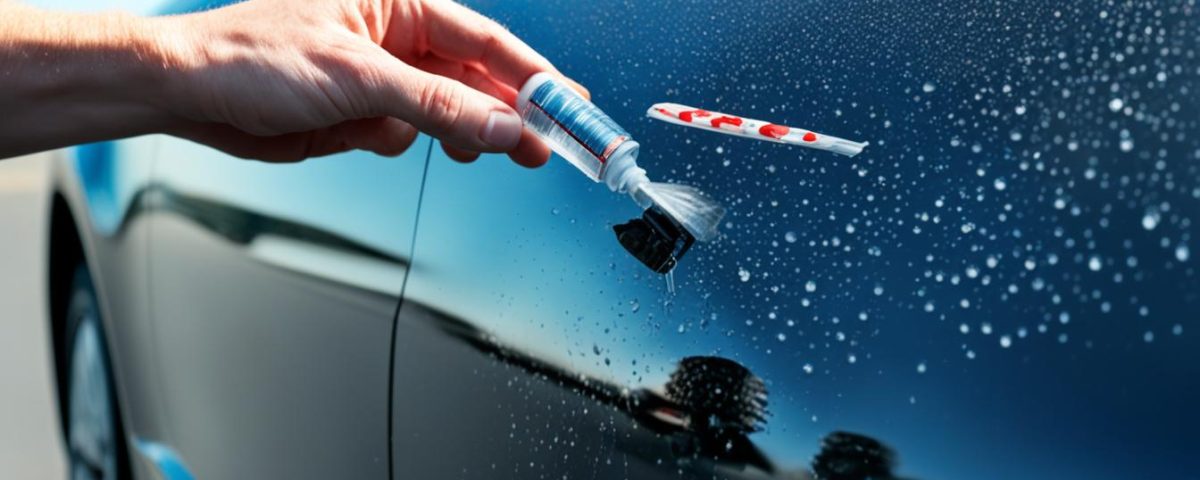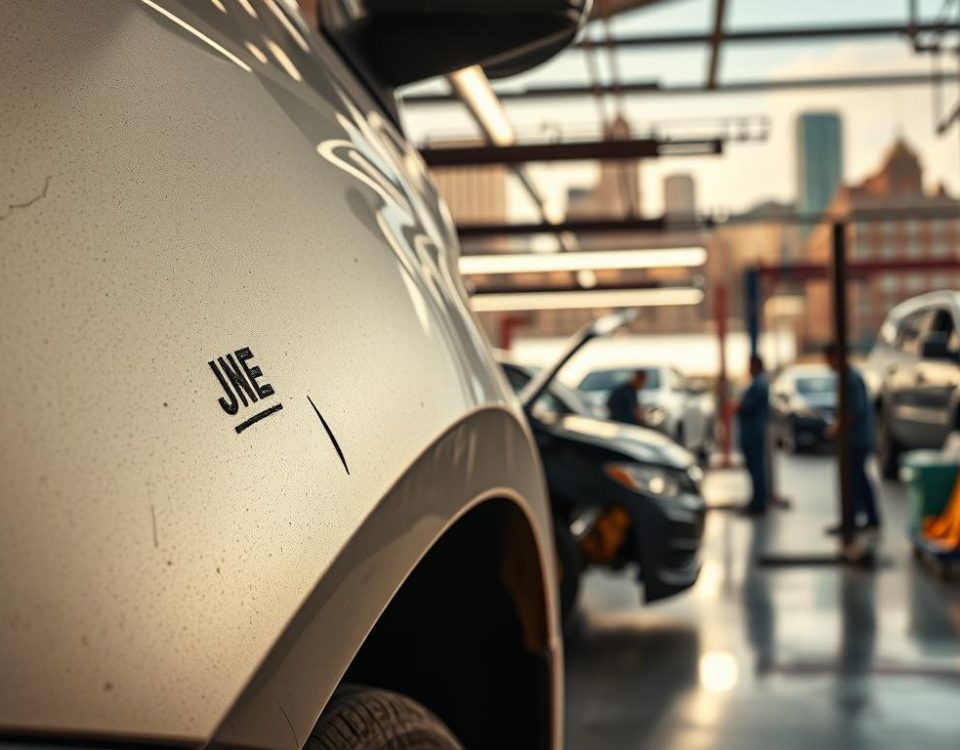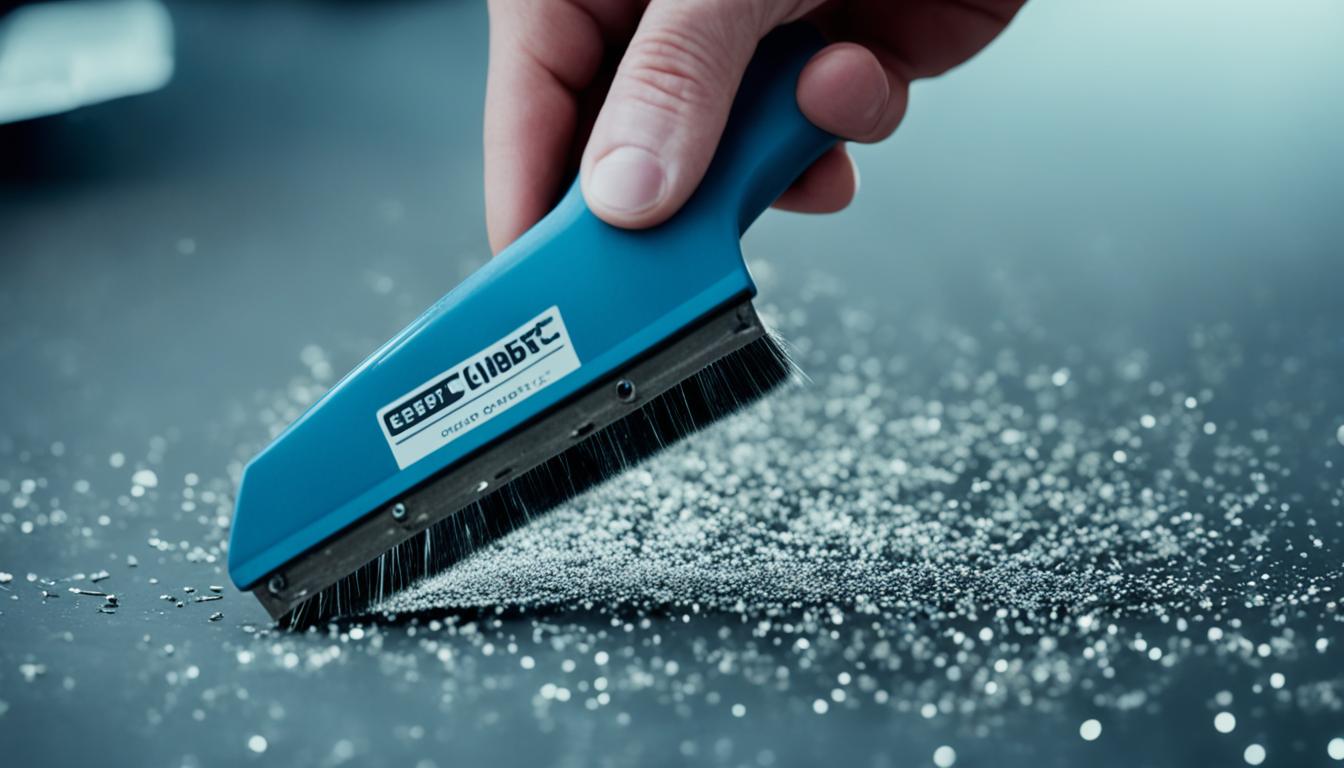
Quick and Effective Bumper Repair Solutions
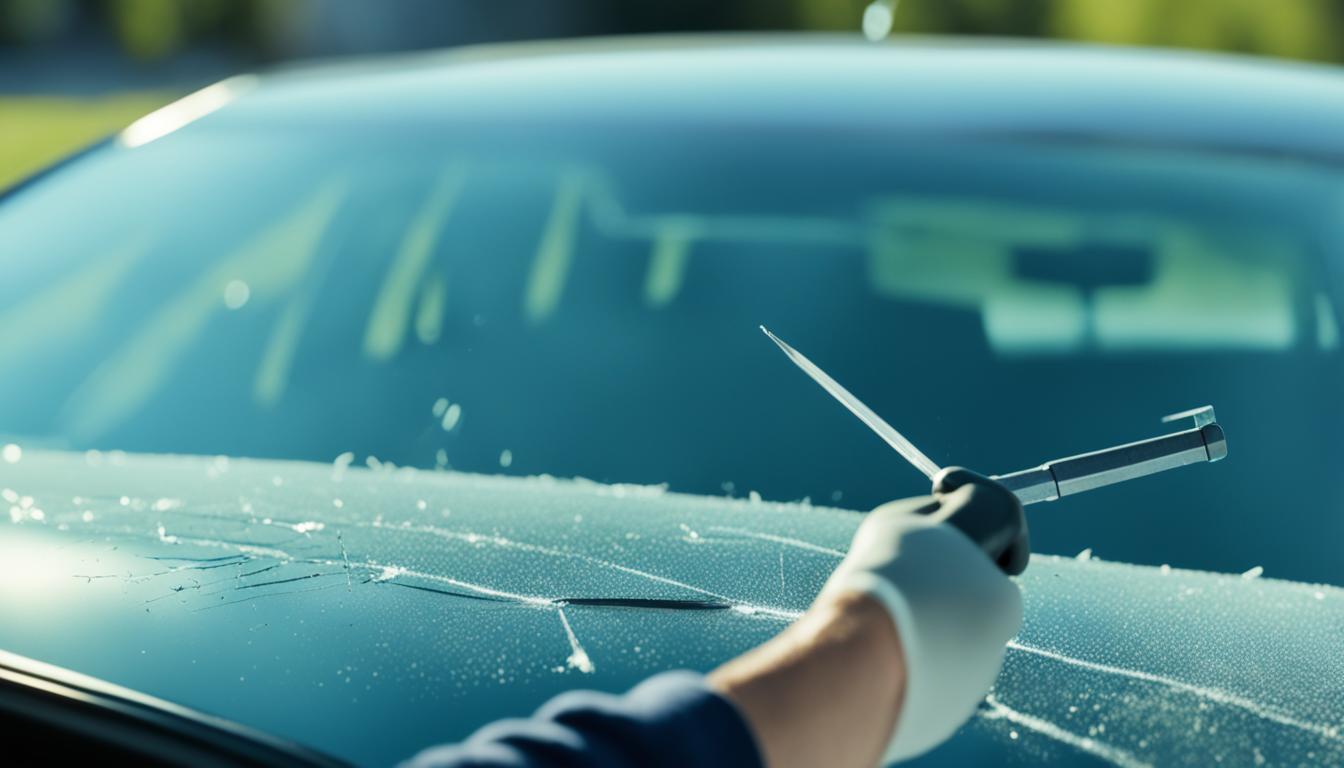
The Essentials of Windshield Repair and Replacement
Your car is more than just a mode of transportation – it’s an investment, a reflection of your personal style, and a source of pride. So when unsightly scratches appear on its surface, it can be disheartening. However, there’s no need to let a scratch ruin the look of your car. With the right tools and techniques, you can remove any scratch on your vehicle and restore its pristine appearance.
In this article, we’ll discuss the different types of car scratches and provide step-by-step guidance on how to effectively repair them. Prompt car scratch repair is crucial, as delaying it will expose the paint or metal underneath to the elements and create further issues down the road. If you plan to sell or trade your car in the future, proper scratch repair is especially important, as bodywork problems may impact the trade-in estimate you receive.
Key Takeaways
- Understand the different types of car scratches, including clear coat and paint/base coat scratches.
- Learn the essential tools and materials needed for successful scratch repair.
- Discover effective techniques for repairing clear coat and paint/base coat scratches.
- Explore strategies to prevent future car scratches and maintain your vehicle’s appearance.
- Recognize the importance of timely scratch repair to protect your car’s finish and resale value.
Understanding Different Types of Car Scratches
As car owners, we often encounter the frustrating problem of scratches on our vehicles. These blemishes can detract from the overall appearance and value of our cars. To effectively address and repair these issues, it’s crucial to understand the different types of car scratches that we may encounter.
Clear Coat Scratches
The most common type of car scratch is the clear coat scratch. These scratches are found only in the clear coating layer that protects the paint. They are usually shallow and can often be remedied with the right tools and techniques. Clear coat scratches are the easiest to address and restore the appearance of our vehicles.
Paint or Base Coat Scratches
More troublesome are paint or base coat scratches. These scratches go deeper, penetrating through the clear coat and into the colored paint layer beneath. These types of scratches require more extensive repair work to restore the car’s finish. Depending on the severity, they may need touch-up paint or even more involved processes to properly address the damage.
While clear coat scratches and paint or base coat scratches are the most prevalent, there is also a third and more severe category: primer scratches. These deep scratches penetrate through the clear coat, paint, and into the primer layer of the car’s finish. Primer scratches are the most challenging to repair and typically require professional intervention to restore the vehicle’s appearance.
Understanding the different types of car scratches is the first step in developing an effective repair strategy. By identifying the depth and nature of the damage, we can select the appropriate tools and techniques to address the issue and restore our car’s pristine appearance.
Tools and Materials Needed for Scratch Repair
When it comes to repairing scratches on your car, having the right tools and materials is crucial. To get the job done effectively, you’ll want to gather a few key items, including car wash soap, a microfiber cloth, rubbing compound, touch-up paint, and various grit sandpapers.
Start with a high-quality car wash soap that’s formulated to gently remove dirt, grime, and other contaminants from the car’s surface without causing any damage. A microfiber cloth is an excellent choice for wiping down the area, as it’s highly absorbent and won’t scratch the paint. Next, you’ll need a rubbing compound, which is a powerful product containing abrasive particles that can help cut through the clear coat and remove scratches and other blemishes.
For deeper scratches that penetrate the paint, touch-up paint is a must-have. This specialized automotive paint is designed to seamlessly blend with your car’s existing color, allowing you to cover up small imperfections. Finally, you’ll want to have a selection of sandpapers ranging from 1000-grit to 2000-grit to help smooth out the surface and prepare it for the touch-up paint application.

With these essential tools and materials at hand, you’ll be well on your way to restoring your car’s appearance and protecting its value. Remember to follow the proper techniques and safety precautions to ensure a successful scratch repair process.
Repairing Clear Coat Scratches
Addressing clear coat scratches on your vehicle’s paint is a straightforward process that can help restore its pristine appearance. The clear coat is the outermost layer of the car’s paint, and these types of scratches are often the easiest to repair.
To begin, thoroughly clean the area around the scratch using a gentle car wash soap and water. Dry the surface completely before proceeding. Next, apply a small amount of scratch remover compound to a soft microfiber cloth and gently rub the compound into the scratch using a circular motion. Apply light pressure and continue buffing the area until the scratch is no longer visible.
Once the clear coat scratch has been addressed, it’s time to restore the shine. Apply a small amount of car polish to a clean microfiber cloth and buff the area to a lustrous finish. This final step will help blend the repaired area seamlessly with the rest of the vehicle’s paint.
By following these simple steps, you can effectively repair clear coat scratches and revive the overall appearance of your car. Remember to take your time and work carefully to achieve the best possible results.
Clear coat scratches are often the easiest type of scratches to address, as they only affect the outermost layer of the paint. With the right tools and a bit of elbow grease, you can restore your vehicle’s paint polish and reclaim its showroom-worthy shine.
Scratch Repair for Paint or Base Coat Scratches
When it comes to repairing paint or base coat scratches on your vehicle, the process requires a bit more attention to detail. Let’s dive into the steps to effectively restore the affected area and revive your car’s appearance.
Preparing the Surface
Start by thoroughly cleaning the area around the scratch with car wash soap and water. This will help remove any dirt, debris, or contaminants that could interfere with the repair process. Once the surface is clean, make sure to dry the area completely before proceeding.
Applying Touch-up Paint
Using a toothpick or a small brush, apply a small amount of touch-up paint directly onto the scratch. Be careful to match the paint color as closely as possible to your vehicle’s original finish. Allow the paint to dry completely before moving on to the next step.
Buffing and Polishing
After the touch-up paint has dried, lightly sand the area with 2000-grit sandpaper to smooth out the surface. Then, apply a small amount of rubbing compound to a microfiber cloth and gently rub the compound into the scratch, using a circular motion and applying light pressure. Continue buffing until the scratch disappears. Finally, apply a thin layer of car polish to the area using a clean microfiber cloth, and buff it to restore the shine and luster of your vehicle’s paint.
By following these steps, you can effectively repair paint scratch, apply touch-up paint, and finish with buffing and polishing for a seamless and professional-looking result.
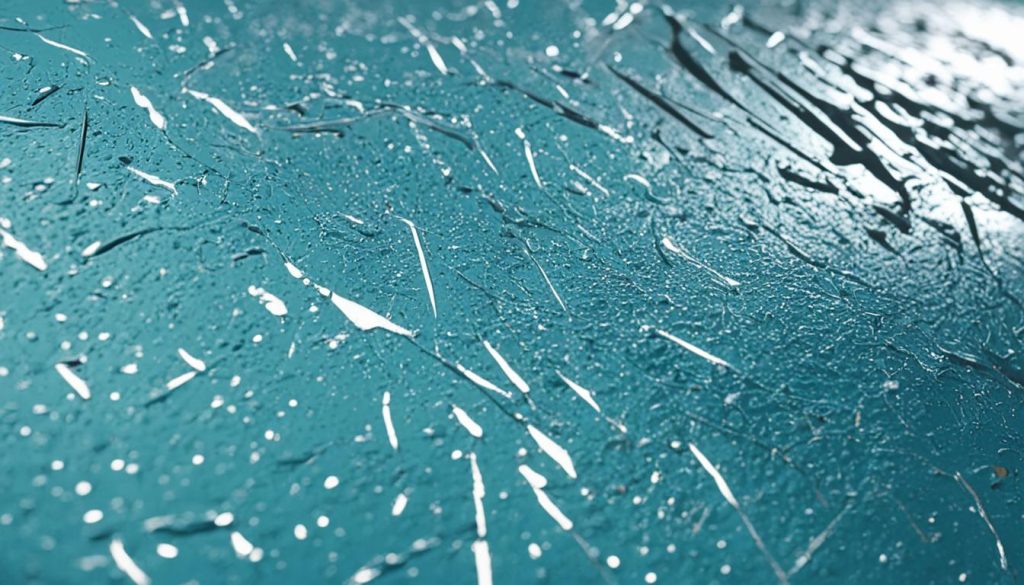
Preventing Future Scratches
Maintaining your car’s pristine appearance is a top priority, and preventing future scratches is crucial. By taking a few simple steps, you can safeguard your vehicle and ensure it retains its showroom-like shine for years to come.
One of the most effective ways to protect your car is by applying a fresh coat of car wax regularly. This reinforces the clear coat and creates a protective barrier against the elements, helping to prevent scratches and other blemishes.
When parking your car, try to opt for a garage or covered area whenever possible. This shields your vehicle from wind-blown debris, tree branches, and other potential sources of scratches. Avoiding parking near vegetation or in areas with high foot traffic can also go a long way in maintaining your car’s pristine condition.
For routine cleaning, we recommend hand-washing your car using a microfiber cloth and high-quality car wash soap. Avoid using automatic car washes, as the brushes can sometimes cause fine scratches on the surface. Instead, take the time to gently clean your car by hand for the best results.
Finally, consider investing in a car cover when parking your vehicle outdoors. This additional layer of protection can shield your car from the elements and prevent scratches caused by wind-blown debris or other environmental factors.
By following these simple tips, you can effectively prevent future scratches and keep your car looking its best for years to come.
Conclusion
Restoring your car’s appearance by repairing scratches is a straightforward process that you can successfully tackle at home. By understanding the different types of scratches and following the techniques outlined in this article, you can revive your vehicle’s pristine look and maintain its value.
However, if you lack the time, expertise, or equipment to handle the scratch repair yourself, consider enlisting the services of a professional auto detailing company like Miracle Body and Paint. Their skilled technicians have the knowledge and tools to meticulously address your car’s scratch-related issues, ensuring a flawless finish that exceeds your expectations.
At Miracle Body and Paint, we pride ourselves on our commitment to providing top-notch mobile auto detailing services, delivering exceptional results right at your doorstep. Whether you need a complete paint correction or a targeted scratch removal, our team of experts will work diligently to restore your car’s showroom-like appearance, preserving its value and enhancing your driving experience.


